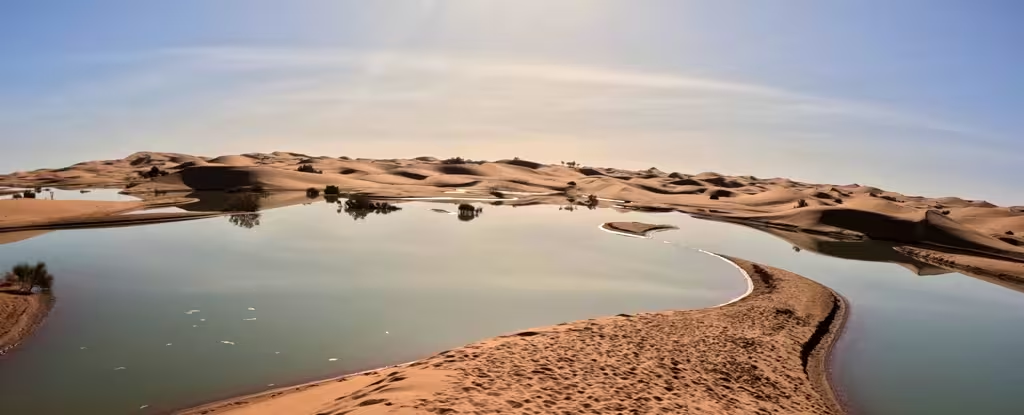A rare downpour in Morocco’s southeastern desert has brought lakes and ponds back to life, and locals and tourists have hailed it as a blessing. In Merzouga, an attractive tourist town about 600 kilometers (370 miles) southeast of the capital Rabat, once-dry golden dunes are now dotted with restored ponds and lakes.
“We are incredibly pleased with the recent rains,” said local guide Youssef Ait Chiga, who led a group of German tourists to Lake Yasmina, nestled among the Merzouga dunes.
Khalid Scanduli, another tour guide, said the rain had brought even more visitors to the tourist area, and these visitors were now especially eager to see this strange transformation. French tourist Letizia Chevalier, who visits the region regularly with him, also said that the rains were “a blessing from heaven”.
“The desert became green again, animals found food again, plants and palm trees came back to life,” he said.
Local residents told AFP the pool had been empty for almost 20 years. According to the October report of the General Directorate of Meteorology (DGM), last year was the driest year in the last 80 years with a 48 percent decrease in precipitation in Morocco. But heavy rains in September caused floods in southern Morocco, killing at least 28 people, according to officials.
Rare heavy rains are threatening its economically vital agricultural sector as the North African kingdom grapples with its worst drought in nearly 40 years.
Similar rain and flooding occurred in neighboring Algeria in early September, killing six people. North African countries are now among the most water-scarce countries in the world, according to the World Resources Institute, a nonprofit research organization.
The Kingdom’s Meteorological Agency described the recent heavy rains as “extraordinary”. This is due to an unusual shift in the intertropical convergence zone, the equatorial region where winds from the northern and southern hemispheres meet, causing storms and heavy rains.
“Climate Change”
“Everything points to the fact that this is a sign of climate change,” Moroccan climate scientist Fatima Driouesh told AFP. he said. “But it’s too early to say anything definitive without extensive research.”
Driuech emphasized the importance of further research to link this event to broader climate trends. Experts say climate change is making extreme weather events such as storms and droughts more frequent and intense.
In southern Morocco, rains helped partially fill some reservoirs and replenish groundwater reserves. However, experts say the rains need to continue for longer for these levels to increase significantly.
The rest of the country is struggling with a sixth consecutive year of drought, threatening Morocco’s agricultural sector, which employs more than a third of the workforce. French tourist Jean-Marc Berhokurigoen, 68, said he was surprised to see Lake Yasmina refilled.
“I felt like a kid on Christmas morning,” he said. “I haven’t seen a sight like this in 15 years.”
AFP reporters also saw water returning to other desert areas, such as Erg Znaighui, about 40 kilometers south of Merzouga. Although the rains have brought life to Morocco’s arid southeast, Driues warns that “no single extreme event can bring lasting change.”
But Morocco’s meteorological agency said last week that such showers could become more frequent, “partly due to climate change as the intertropical convergence zone shifts further north.”
Source: Port Altele
